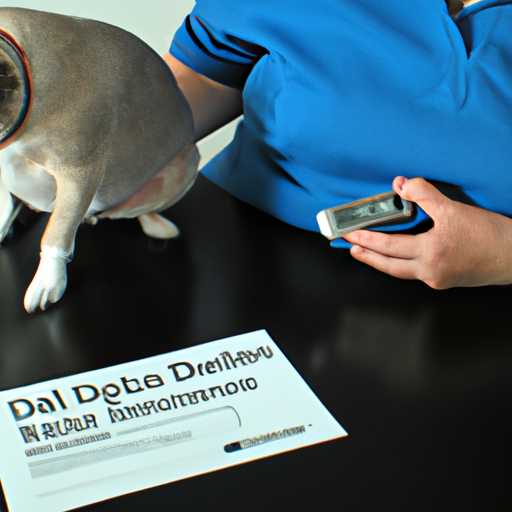As a caregiver, you play a critical role in your dog’s health. When they’re diagnosed with a condition like diabetes, you may feel overwhelmed. But don’t worry, we’re here to guide you through the process.
Understanding Canine Diabetes
Canine diabetes, like human diabetes, is a condition where your dog’s body doesn’t produce enough insulin or doesn’t use insulin effectively. Insulin, a hormone, is responsible for regulating blood sugar. When this doesn’t occur correctly, your dog’s blood sugar can spike dangerously.
Symptoms of Canine Diabetes
Understanding the symptoms of canine diabetes is the first step in providing proper care. Keep an eye out for:
- Excessive Thirst
- Increased Urination
- Unexplained Weight Loss
- Increased Hunger
- Cloudy Eyes (in dogs with diabetes)
Should you notice these signs, it’s important to consult your vet.
Diagnostic Process
Your vet will likely conduct a blood test and urine test to confirm a diabetes diagnosis. These tests measure your dog’s blood sugar levels and check for sugar or ketones in their urine.
Treatment Options
After diagnosis, the primary goals are to regulate your dog’s blood sugar levels and manage any complications. Here’s how you can do that:
1. Insulin Therapy
Your vet may recommend insulin injections, which you’ll need to administer at regular intervals. This might sound daunting, but with a little practice, you’ll quickly master it.
2. Dietary Changes
A balanced diet is essential for managing canine diabetes. Your vet might suggest a special diet high in fiber and low in fat.
3. Regular Exercise
Routine exercise helps maintain a healthy weight, which is crucial in managing diabetes.
Monitoring your Dog’s Health
Regular monitoring is key to ensuring your dog’s treatment plan is working. You’ll need to:
- Monitor Blood Sugar: You may need to regularly check your dog’s blood sugar levels at home.
- Watch for Symptoms: Keep an eye out for changes in your dog’s behavior, appetite, or water consumption.
- Regular Vet Check-ups: Regular vet appointments will help track your dog’s progress.
Possible Complications
Uncontrolled diabetes can lead to complications like:
- Cataracts
- Kidney Disease
- Urinary Tract Infections
If you notice any new symptoms, contact your vet immediately.
FAQs
1. Can my dog live a normal life with diabetes?
Yes, with proper care and treatment, dogs with diabetes can lead normal, healthy lives.
2. How often should I monitor my dog’s blood sugar?
This depends on your dog’s condition and your vet’s advice. Some dogs may need their blood sugar checked multiple times a day.
3. What should I do if my dog’s blood sugar levels are too high or too low?
If your dog’s blood sugar is too high or too low, contact your vet immediately. They may need to adjust your dog’s insulin dosage or diet.
4. Can diabetes in dogs be cured?
There’s no cure for diabetes in dogs, but it can be managed effectively with a proper treatment plan.
Remember, as a caregiver, your love and attention are crucial in managing your pet’s diabetes. The journey may be challenging, but with patience and commitment, you can provide your dog with a healthy and comfortable life.



